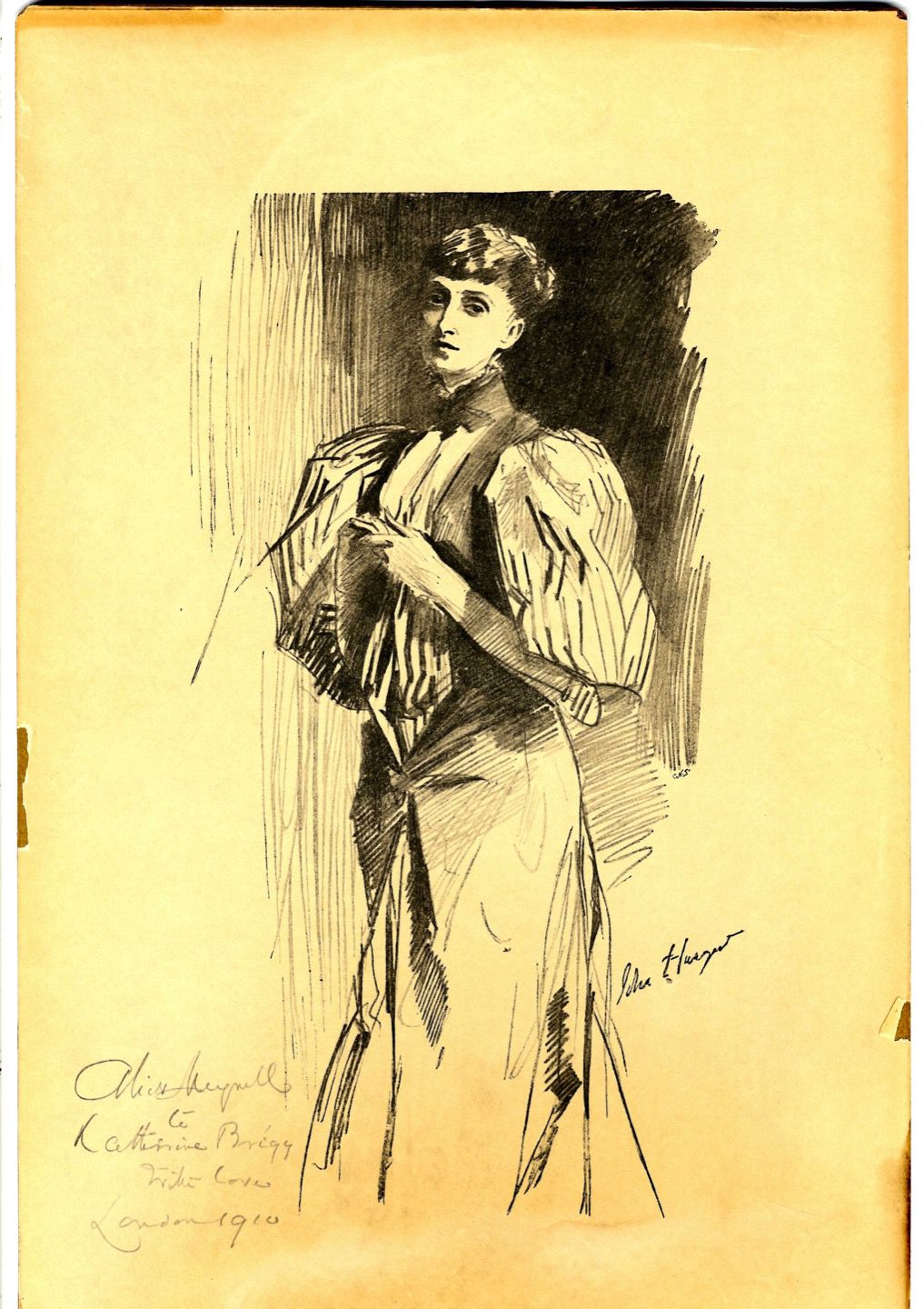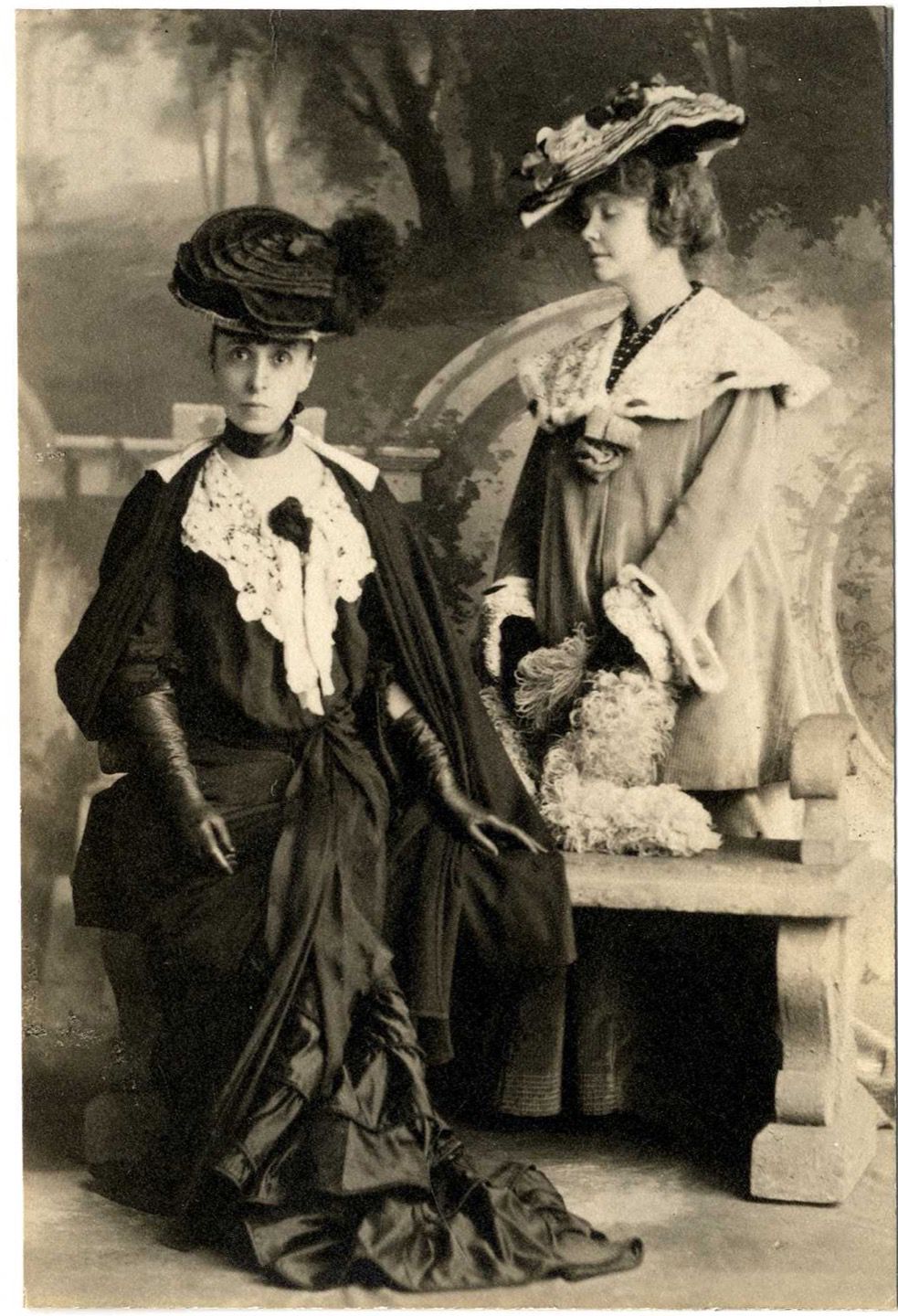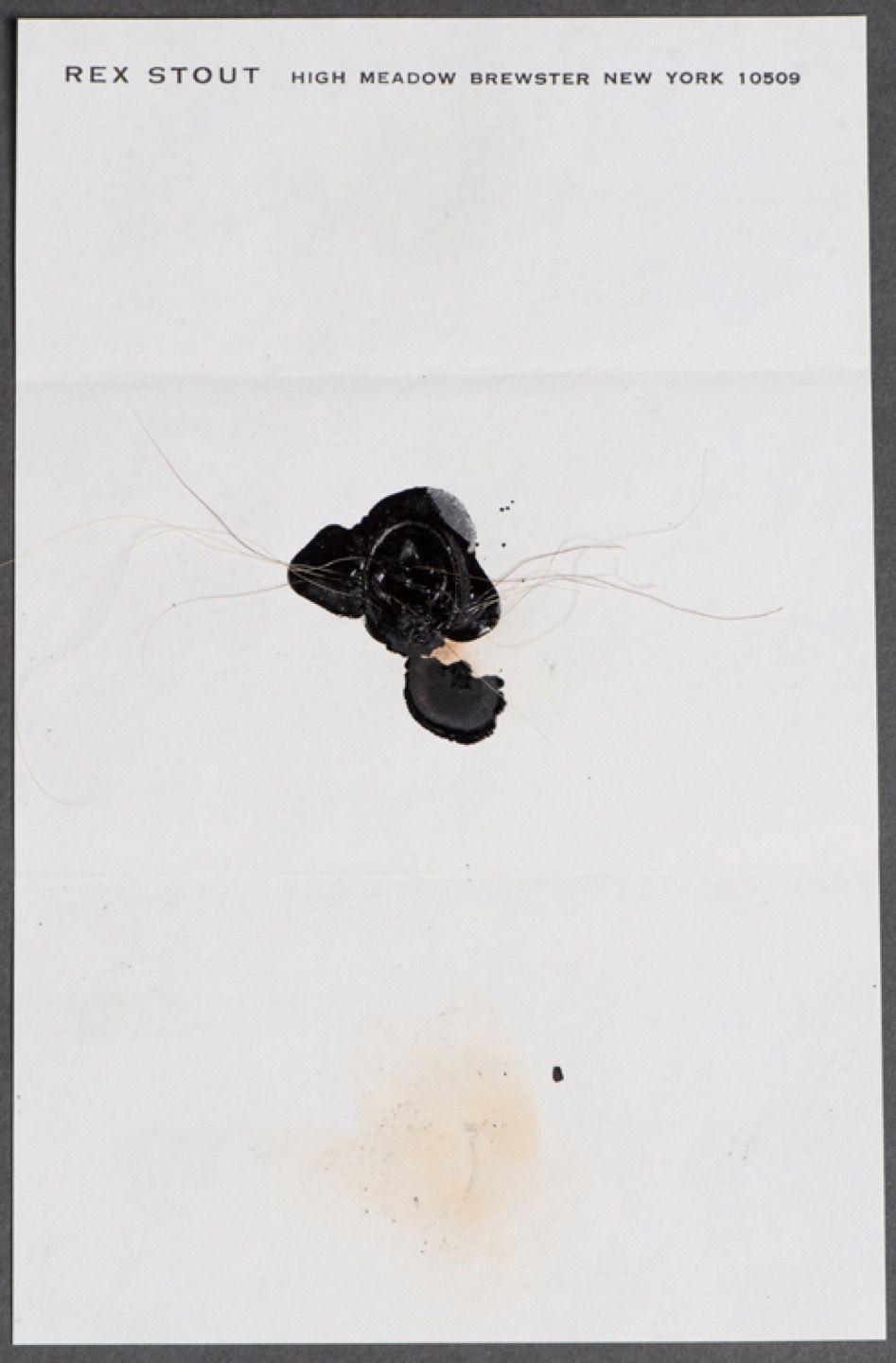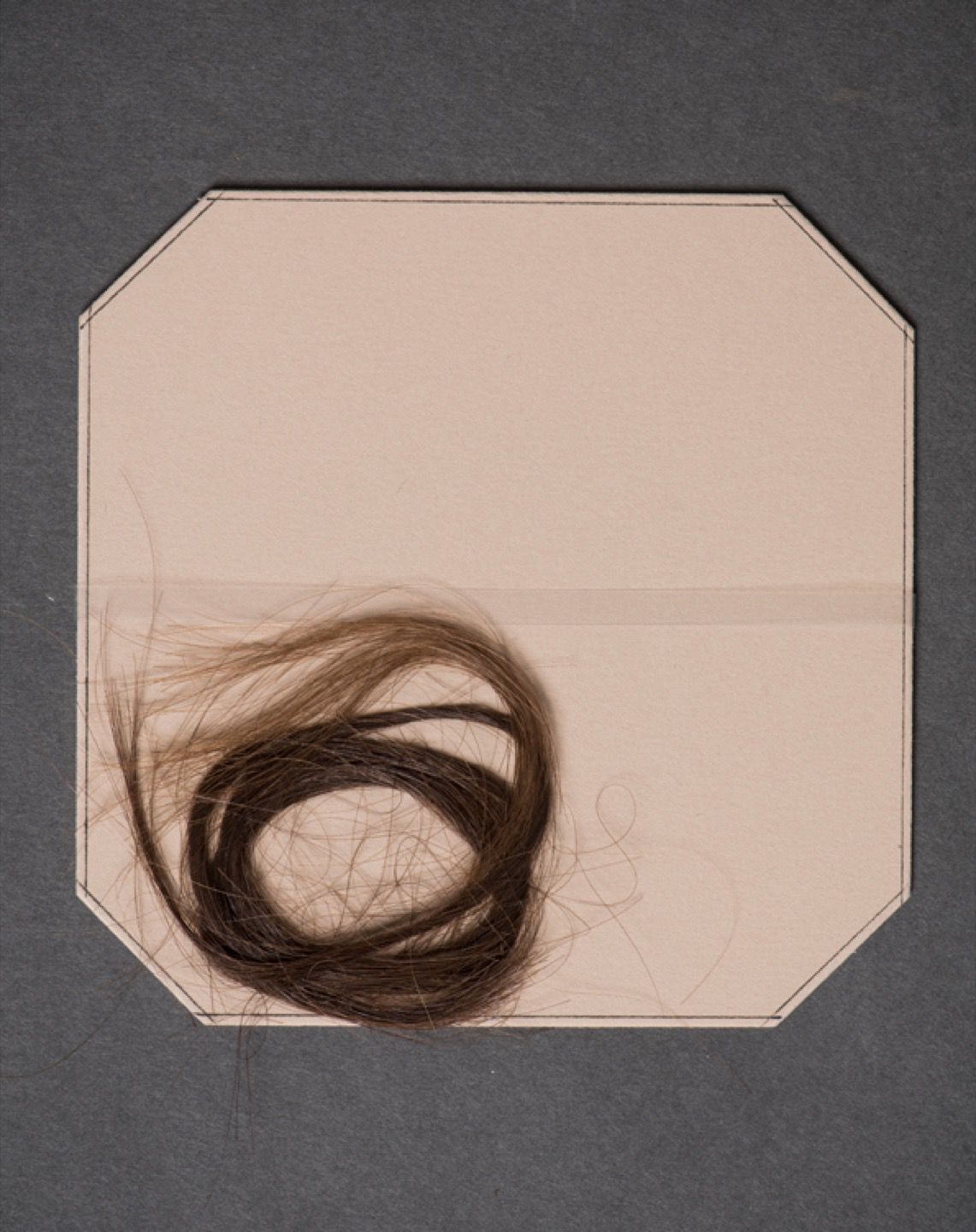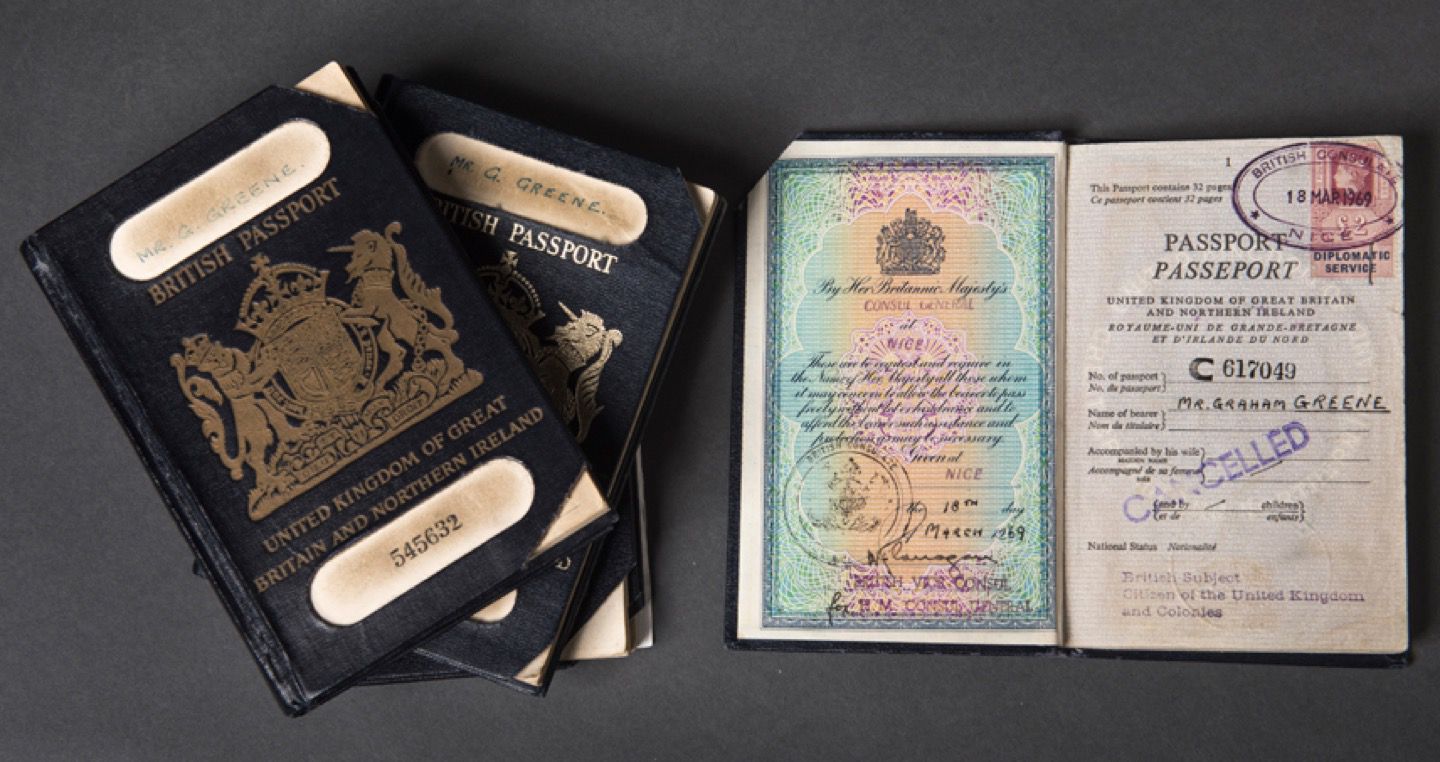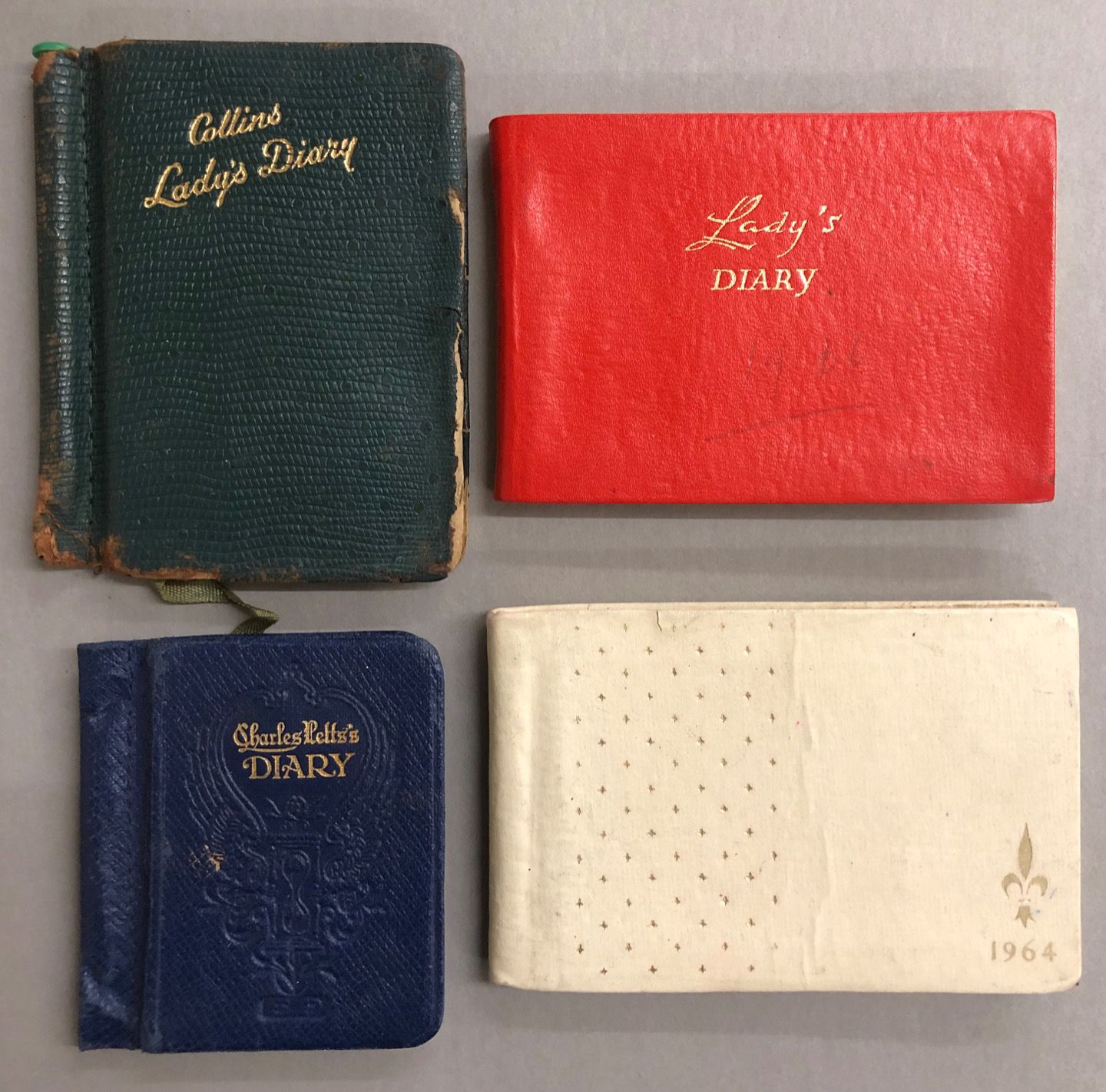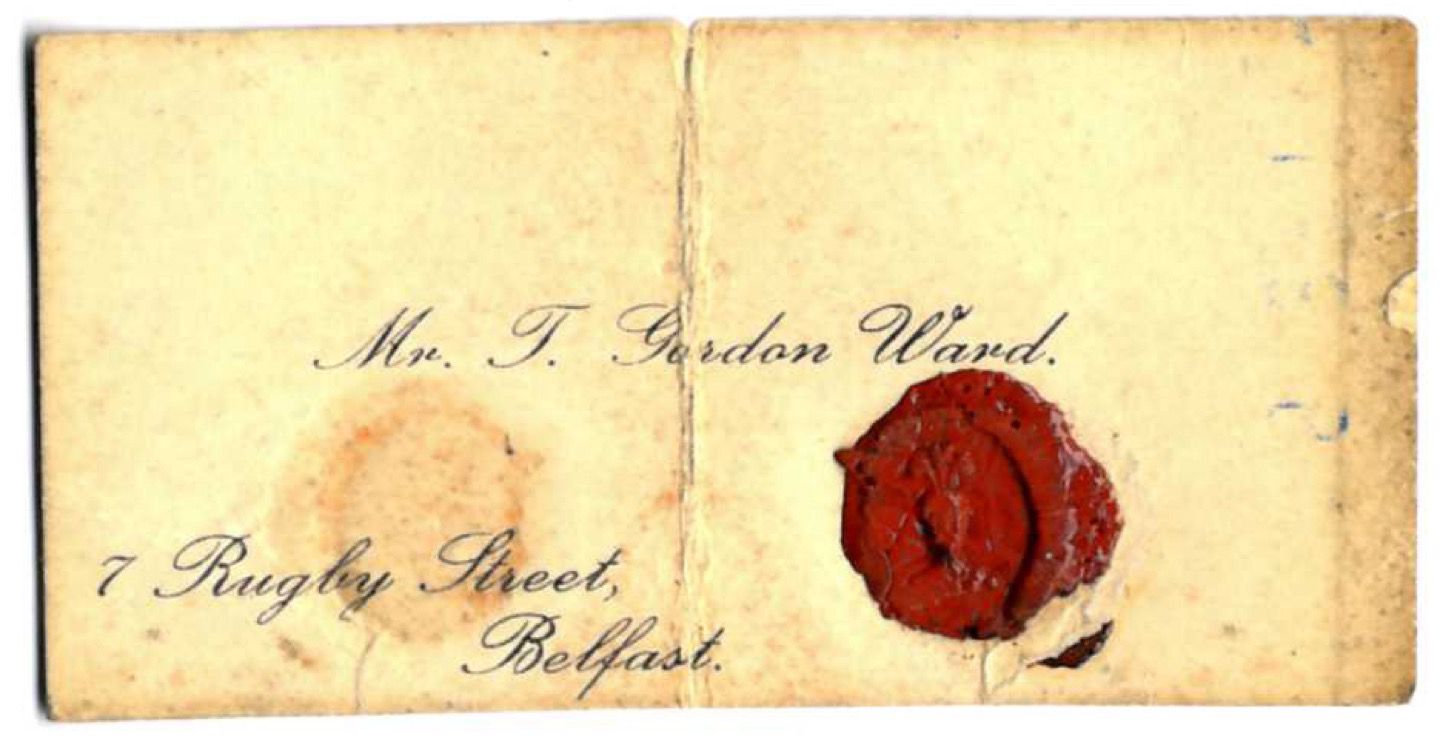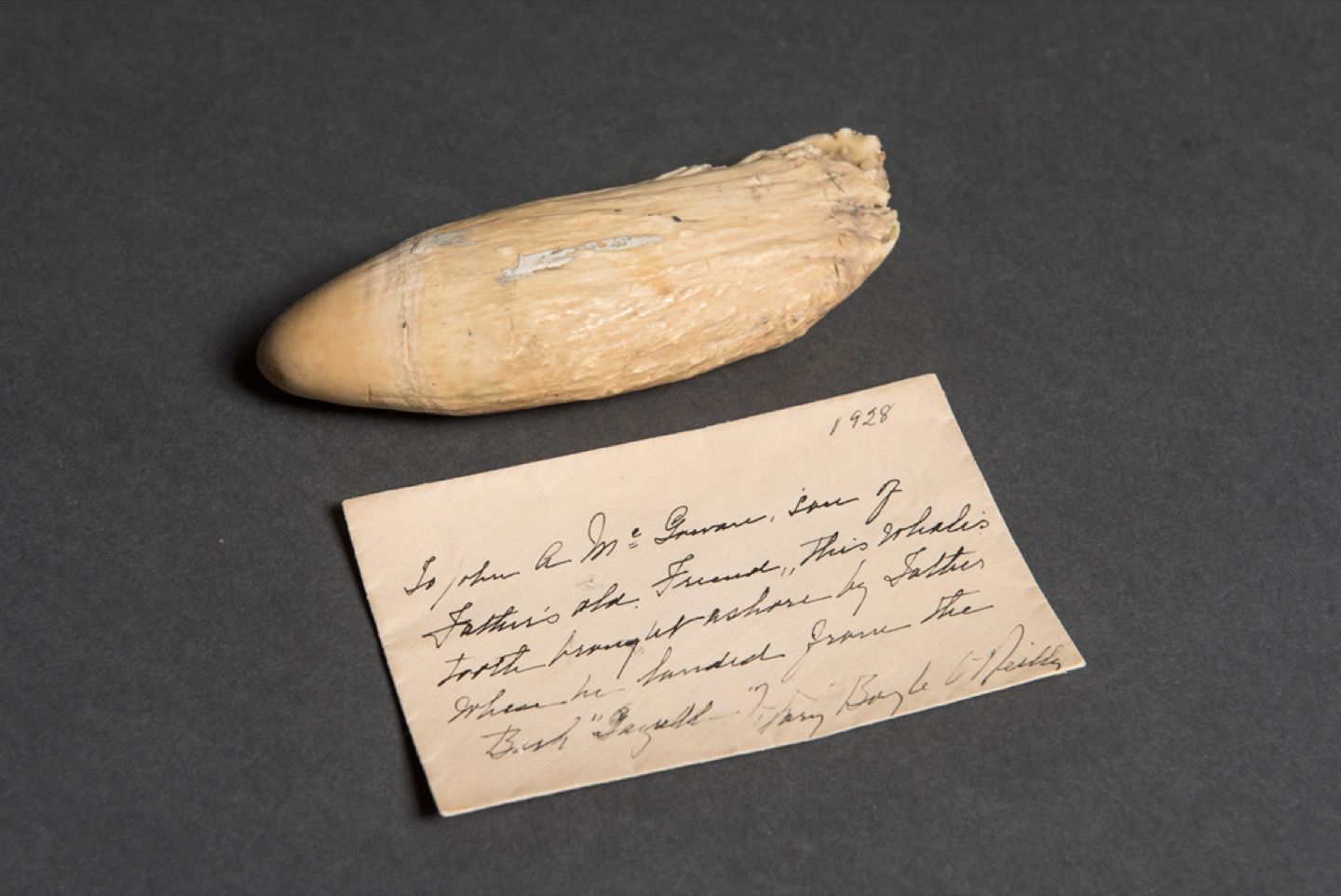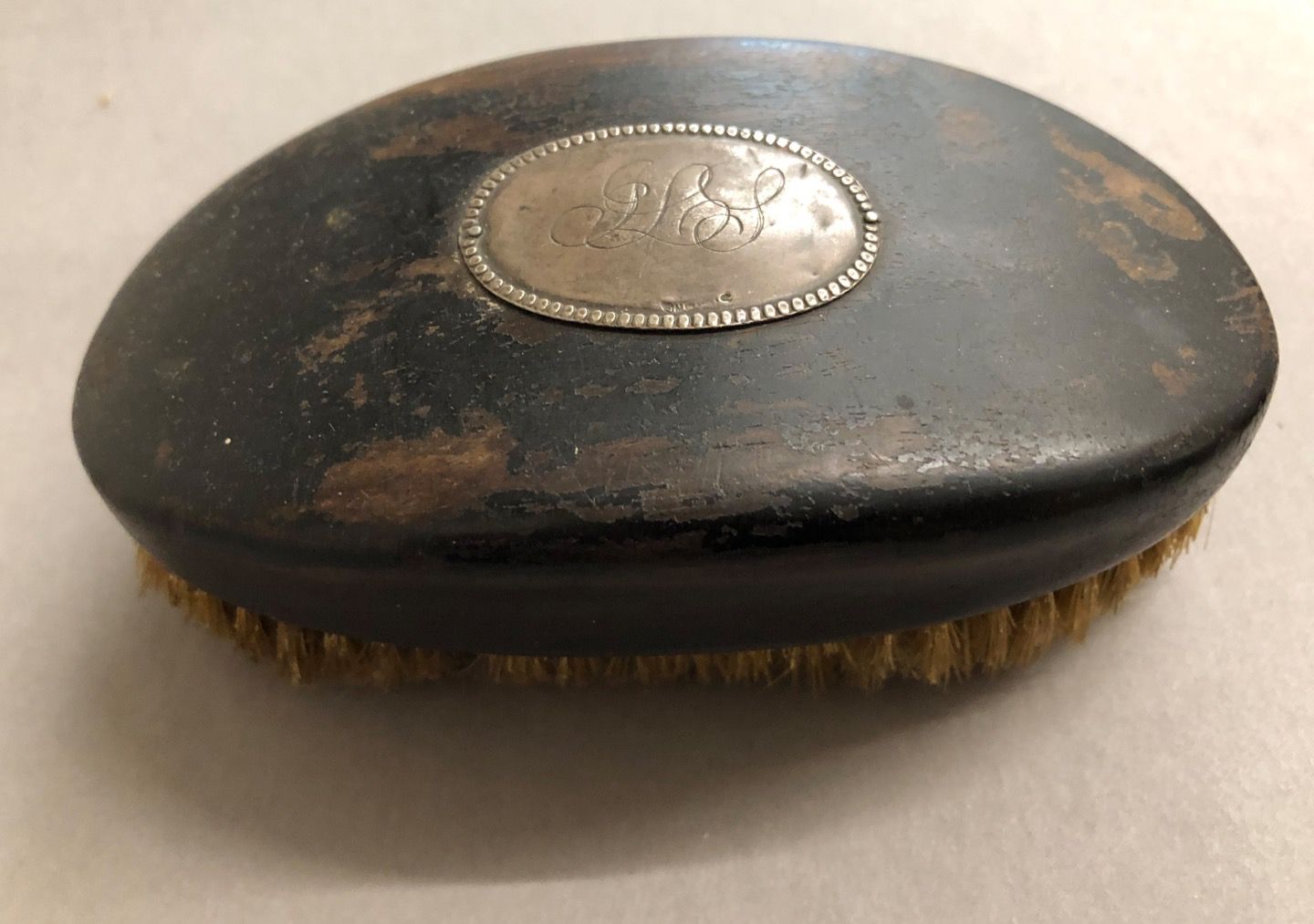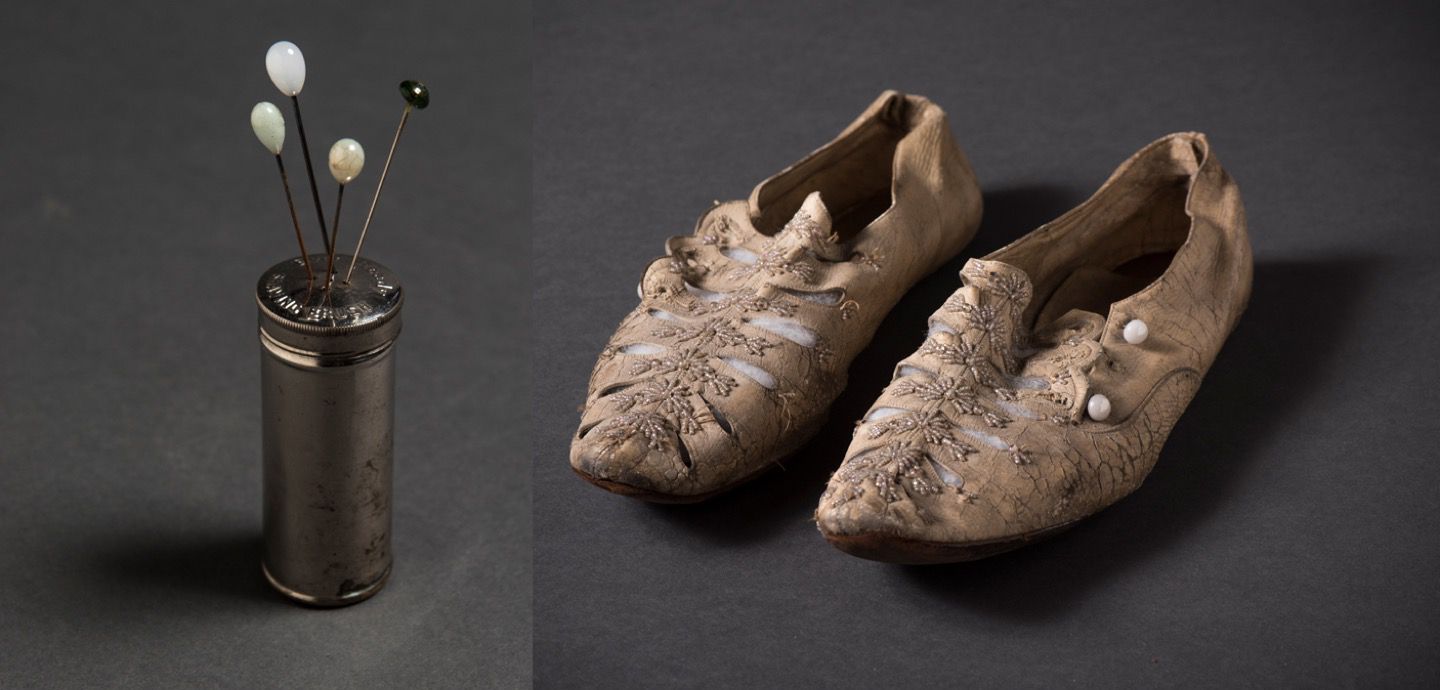Personal Objects
Personal objects make up much of the materiality of everyday human life, preserving memories, scheduling time, and meeting the costuming needs of the human body. These objects are often particularly unique as they retain the shape and impressions of their owner even when removed from the personal setting of the home or the individual. Well-worn shoes, photographs of a family library, and personal calendars all show traces of the humans they once interacted with, breaking down barriers of time and space to offer a glimpse into the day-to-day life of both object and person.
Alice Meynell was a 19th-century poet and author; she and her husband ran and edited the monthly magazine Merry England that helped introduce poet Francis Thompson to the literary world. This portrait of Alice was drawn by John Singer Sargent; was Sargent’s portrait of Alice Meynell a good likeness? Compare it to this undated photograph of Alice Meynell (seated) and her friend Agnes Tobin.
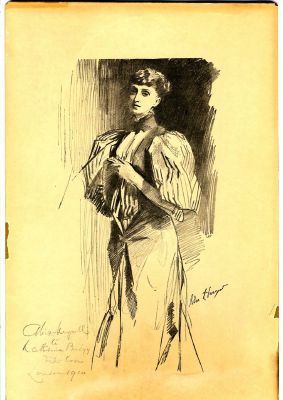
John Singer Sargent Portrait of Alice Meynell, signed by Meynell to Katherine Brigg, 1910
Box 2, folder 18, Boston College Collection of Alice Meynell, MS1986-061
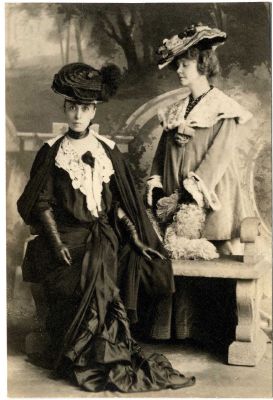
Photograph of Alice Meynell and Agnes Tobin, undated
Box 2, folder 16, Boston College Collection of Alice Meynell, MS1986-061
Though it may seem unusual to us, locks of hair were often exchanged as keepsakes or remembrances. This bit of hair from author Rex Stout’s beard was sent to John McAleer, his official biographer. Henrietta Persse and one of her sisters sent locks of hair to family friend Mary Doyle Evans.
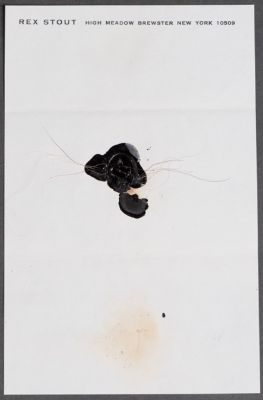
Rex Stout’s Beard Hair
Box 12, folder 28, John J. McAleer Faculty Papers, BC1995-016
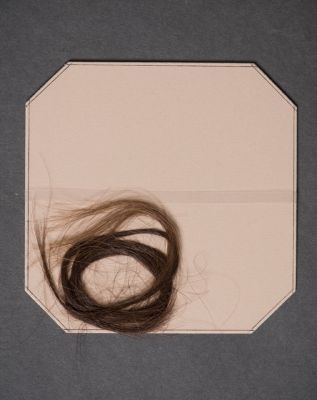
Locks of Persse Family Hair
Box 1, folder 19, Dugan Collection of Doyle, Evans, and Persse Family Materials, MS2004-056
Graham Greene, a British Catholic author known for his novels such as The Power and the Glory, was also a member of MI-6. His canceled passports show that he traveled extensively, strongly influencing his literary output.
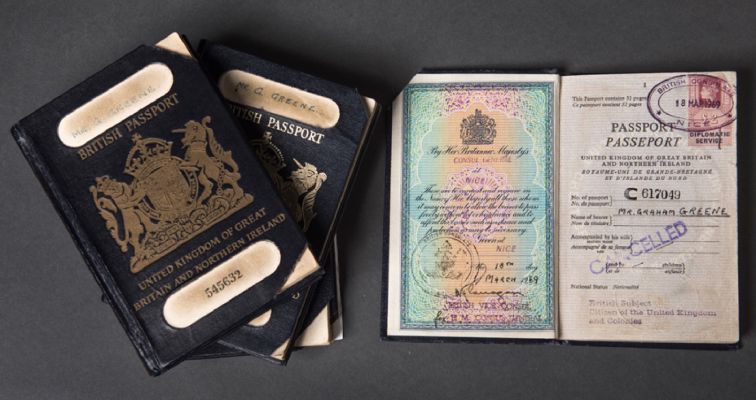
Graham Greene’s Passports
Box 81, Graham Greene Papers, MS1995-003
Similar to Graham Greene’s many passports, Nancy Ward Martin’s diaries (also known as planners or schedules) and address books show a life full of activity. The brightly colored books span decades, recording day-to-day errands, outings, and plans. More removed from the immediacy of Mrs. Martin’s diaries, the wax seals of the Ward crest rings encourage us to think about the material means by which a family can be remembered.
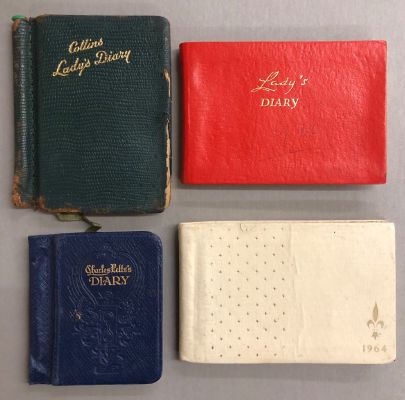
Nancy Ward’s Diaries and Address Books
Box 2, Ward-Martin Family Papers, MS2003-053

Ward Crest Ring wax seals on calling cards
Box 1, folder 14, Ward-Martin Family Papers, MS2003-053
John Boyle O’Reilly, an Irish nationalist, was arrested by the British and transported to Australia where he escaped on a New Bedford whaling ship. This sperm whale tooth, a memento of his time at sea, is accompanied by an explanatory note written by O’Reilly’s daughter. This rock was also included in the John Boyle O’Reilly collection, but its significance is unknown, an example of the challenges of provenance, retention, and connection that archivists work with as they process collections for researchers.
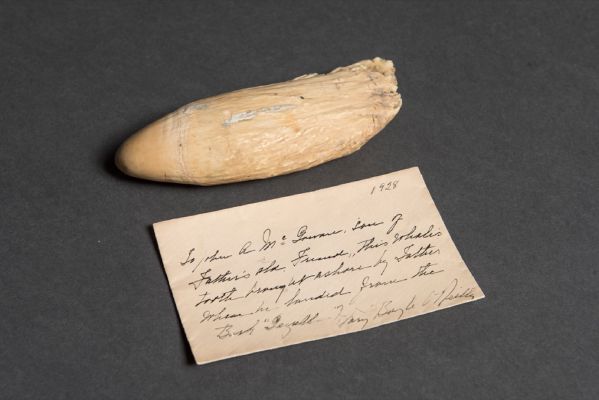
Sperm whale tooth and note of provenance
Box 6, John Boyle O’Reilly Papers, MS2004-093
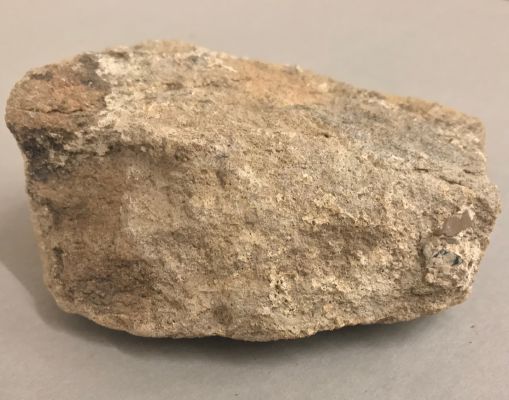
Rock, unknown significance
Box 4, John Boyle O’Reilly Papers, MS2004-093
This hairbrush and shaving brush are engaging in their familiarity and connotations of personal grooming. John Lawrence Sullivan was a heavyweight, bare-knuckle boxing champion, and William and Michael Hanafin were traditional Irish musicians; all three were part of the Irish community in Boston.
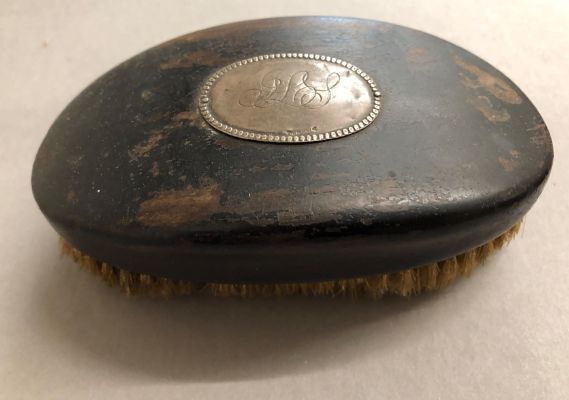
John Lawrence Sullivan’s Hairbrush
Box 3, John Lawrence Sullivan Papers, MS2012-013
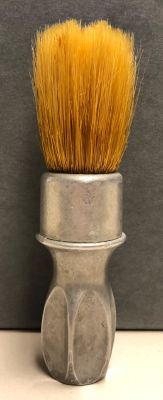
Shaving Brush
3, William F. and Michael C. Hanafin Family Papers, IM-M143-2005
Martha Moore Avery, a former milliner and co-founder of the Catholic Truth Guild with David Goldstein, exemplifies the beauty of the everyday in her clothing. Her well-worn shoes and hatpins, which retain the elegance of a bygone era, were also practical and personal objects.
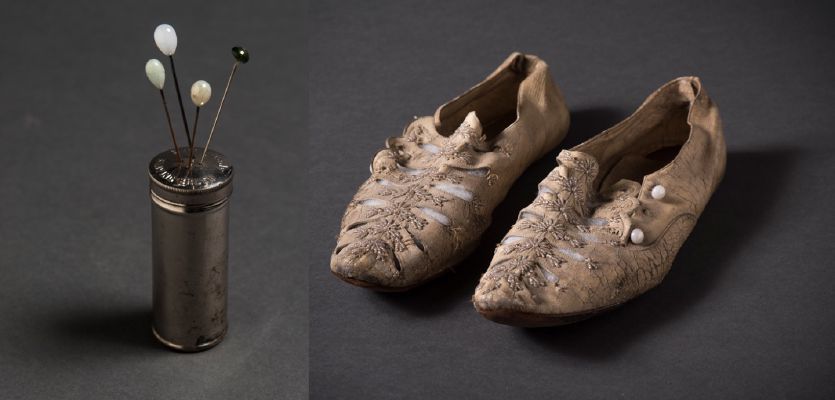
Hatpins in Holder; Shoes, circa 1890s-1929
Box 2; box 5, David Goldstein and Martha Moore Avery Papers, MS1986-167

